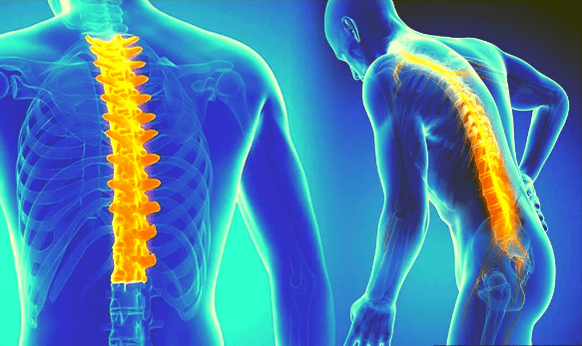
The problem of cervical osteochondrosis: symptoms, diagnosis and methods of treating the spine are important for a large number of people over 35 years.Although young people are also experiencing this problem.It is the fault of the modern sedentary lifestyle and you cannot reach this essentially.Office-Stol-Computer-Divan and vice versa.
What does osteochondrosis mean
The term osteochondrosis has passed from the Greek language ὀστέον - bone and χόνδρος - cartilage.At the end, a suffix is added.As a result, it turned out to be: Osteo (Bone) Hondra (cartilage) OOSIS (not an inflammatory disease). This will be so in a simple language - it is not an inflammatory disease of the bone system.
The term osteochondrosis has become synonymous with any back pain.Back it hurts?- So you have osteochondrosis, my friend.
The causes of the development of osteochondrosis
Osteochondrosis problems do not only have a cause of appearance.The reasons are different situations non -functional to the spine:

- Excessive load, if you take the cervical spine, it is the most mobile spine and in one way or another experiences the largest dynamic loads, that is, there is the largest movement for life;
- Static load - This is a stuck job, for example;
- hard work - occupational disease;
- unfavorable hereditary situations;
- generally Age factor and agingS
Age does not always play a single role, but as they say, we begin to erase from the moment of birth or, at least from puberty.Accordingly, age also plays a significant role.
Osteochondrosis is a radiological condition, that is, it must be confirmed by X -ray.In general, if you really want, then the changes in the spine that are suitable for the term osteochondrosis can be found in any person over 30-35 years.
Symptoms of osteochondrosis
It is very difficult to say that it is osteochondrosis that causes certain pain in the spine.Because acute pain syndrome most often gives muscle spasm to the cervical spine, that is, spasm to the muscles of the collar area.
Muscle spasm can give chronic pain from another condition:
- Spondylosis, bone growth spondylolist (osteophytes);
- Vertebrae;
- Instability in the cervical spine;
- Bear and bulge on discs.
Osteochondrosis is a more background condition and can rarely give some symptoms.
More often, osteochondrosis is combined with any other factors.It can give any pain from the neck and radiating the roots of the neck of the zones:
- Neck pain,
- Pain in the arm or pain in two hands,
- Pain in the neck and head.
The symptoms of pain do not manifest:
- Tingling and weakness in the hands,
- Noise in the head.
Osteochondrosis itself cannot give such sensations.These sensations cause other conditions that need to be sought and should be excluded.
For example, Tingling in the hand can be called:
- tunnel syndrome;
- Hernia on a disk that is not always seen when examining X -ray;
- manifestations of diabetes;
- manifestations of a toxic lesion from the nervous system;
- Vascular diseases.
Accordingly, it is necessary to undergo a full neurological examination in order to identify a pathological condition, which leads to complaints of pain.
Although, unfortunately, under modern conditions, when doctors around the "time boundaries" and a long evil order in the hallway are easiest to make a diagnosis - osteochondrosis than to seek and identify the true causes of pain.
So mass home medicine actually works, which forces people of hopelessness to diagnose the disease (Fortunately for paid clinics) and we prescribe treatment for yourself (Again the internet helps).
Diagnosis of osteochondrosis

The problem with the diagnosis of osteochondrosis is the X -Ray study: radiography, MRI, CT. The last two studies are not quite X, but it helps to diagnose the problem well.
There must be a complete neurological examination to exclude other conditions that cause pain.
Treatment of osteochondrosis
Conservative methods of treatment:
- Unnatural anti -inflammatory drugs are used as standard;
- the use of muscle relaxants to reduce muscle tone;
- use of group B vitamins;
It is mandatory to use treatment methods that are not treated:
- Therapeutic physical culture (exercise therapy) -The main method of treating diseases of the musculoskeletal system.
- Physiotherapy - It is replaced to relieve pain and rehab.
- Massage - relieves muscle tension, muscle pain, improves blood circulation of the muscles.
- Manual therapy -Deyidal manual effect on the bone system to eliminate acute and chronic pain in the spine and joints.
- SpineS
- Use applicatorsS
In addition, they use it Gels, ointments, mustard, jars And the like Folk remedies For home treatment.
Thank you for reading and you have understood the term "osteochondrosis" a little more.



















